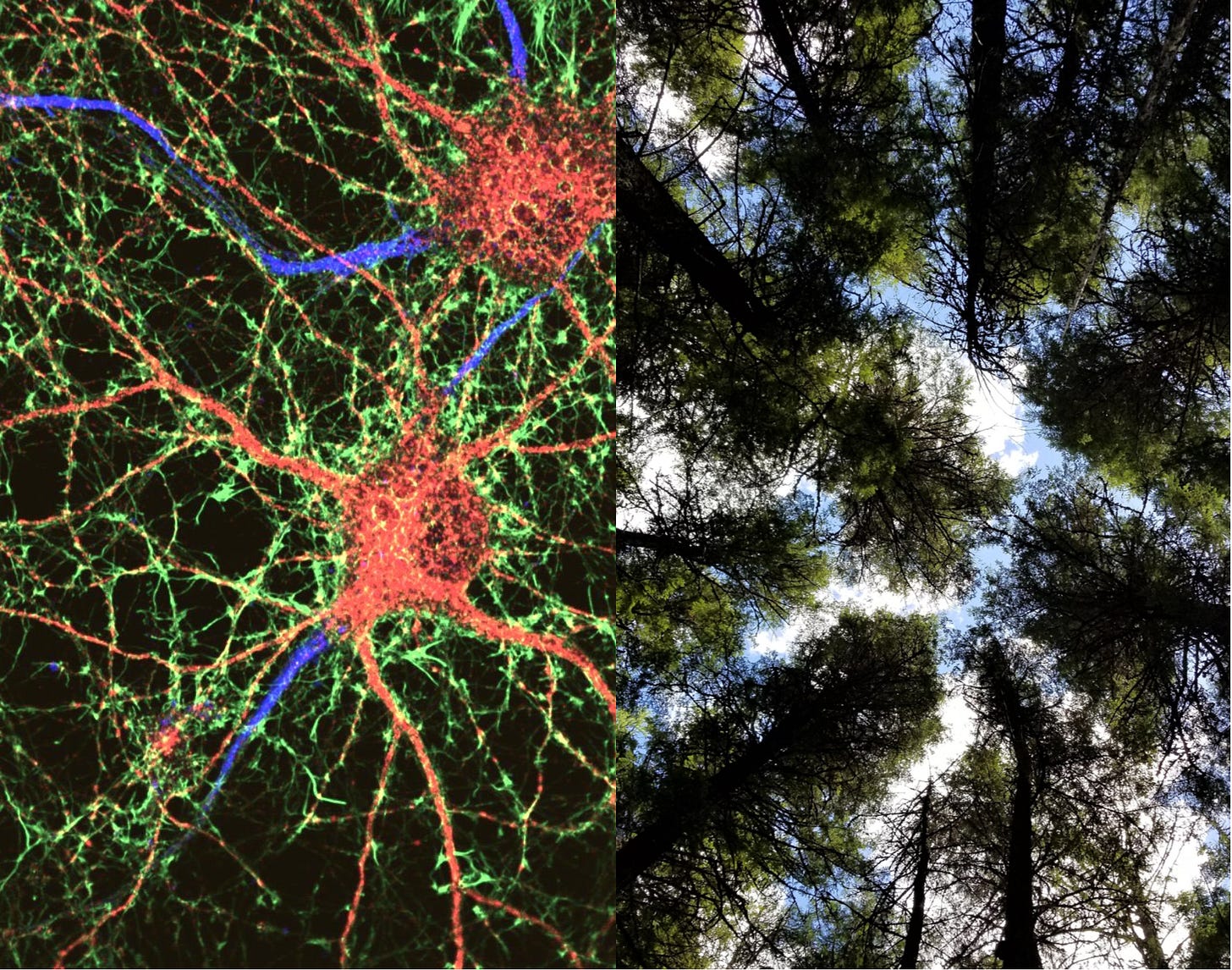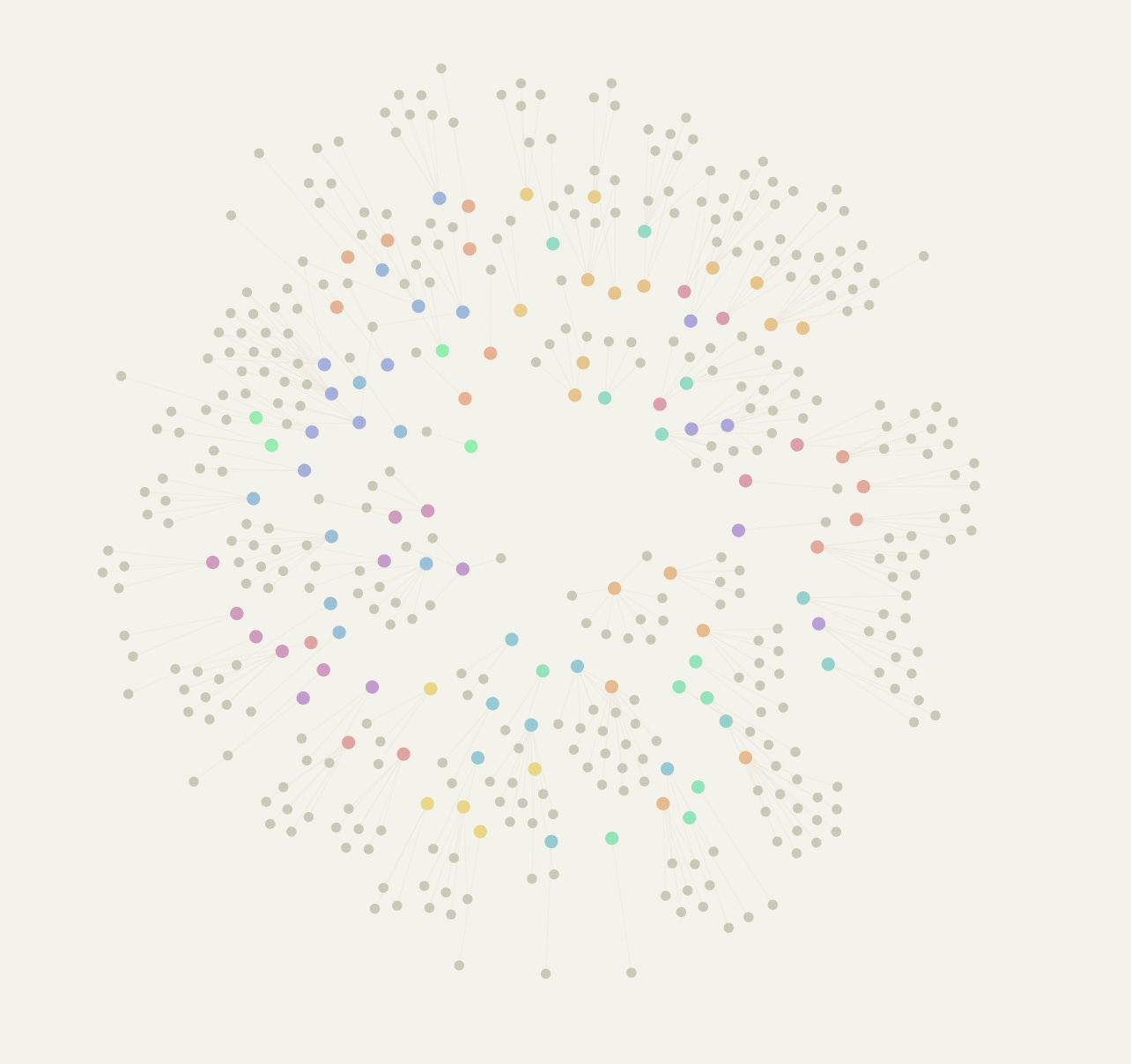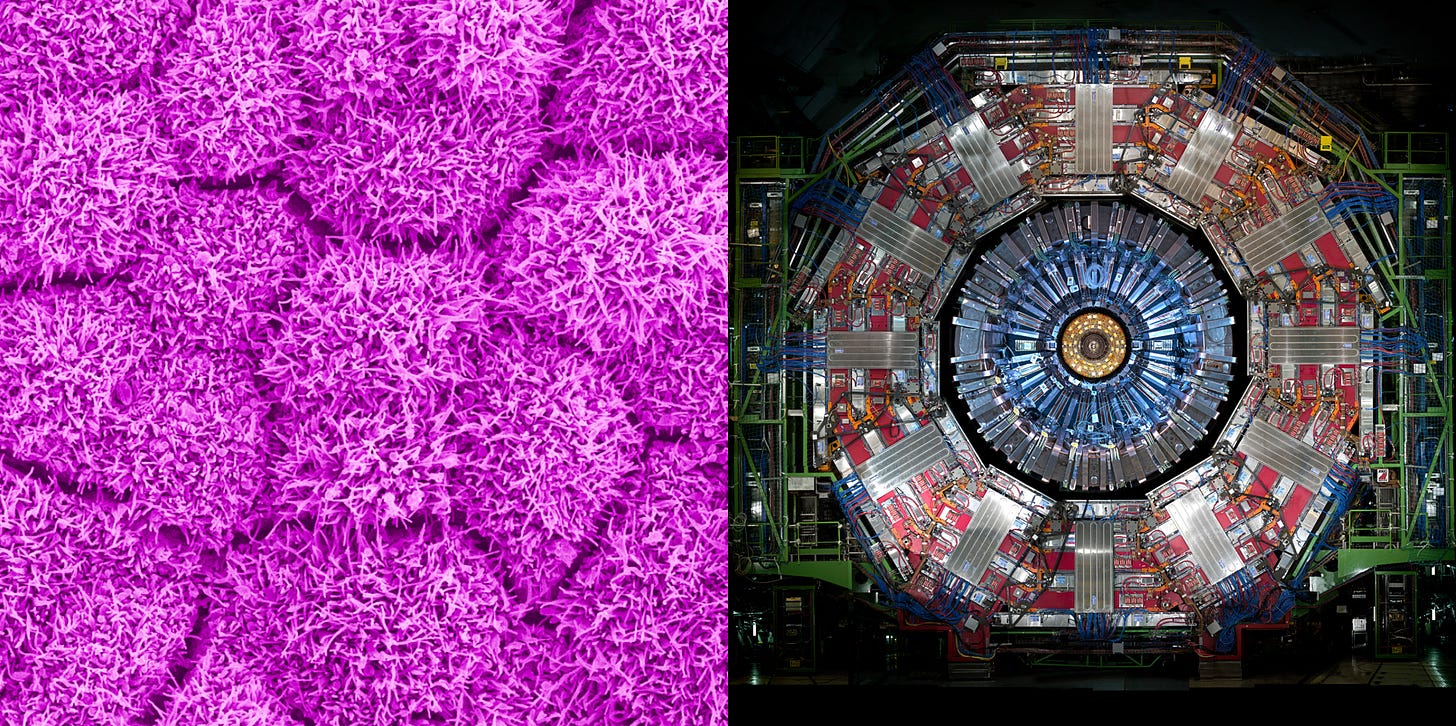Introducing the Convergent Research Gap Map
Explore v1.0 of our interactive survey of the fundamental development projects landscape
Today we’re releasing v1.0 of our Fundamental Development Gap Map, a new web portal for exploring the landscape of bottlenecks holding back science and the fundamental technologies to solve them. You can jump in right away at gap-map.org, and read more about where this database came from below.
Bridging gaps in fundamental R&D
In our first post, we set out a vision for accelerating beneficial scientific R&D:
Humanity could increase its rate of scientific and technological advancement by driving free energy into about 100 especially catalytic projects within reach. If there are ~20 fundamental fields of science, and within each there are ~3-5 pivotal elements of scientific infrastructure that the existing science establishment can’t or won’t build, that's an unmet need on the order of ~100 bridge-scale projects. If each costs $20-50M for a massively enabling sprint, that’s a few $B in input that could unlock trillions in societal value as outputs via accelerated R&D progress.
How do you find those pivotal projects?
In our most recent post, we described how researchers across fields come to create scientific roadmaps -- to identify what’s missing in their fields, and how they can use these roadmaps to make concerted strides forward:
At Convergent, we find these catalytic ideas by talking to brilliant scientists frustrated by systemic barriers to innovation. Motivated researchers are full of great ideas, especially when you give them permission to engage in out-of-the-box, deconstructive thinking.
Over the past few years, we’ve interacted with hundreds of scientists and technologists, and in the process we’ve identified a preliminary (and hopefully provocative!) list that we think illustrates the category of ‘projects that address key gaps in scientific infrastructure’.
To help you explore that list, we’ve built out an interactive database so you can get a bird’s-eye view of various scientific fields, their R&D gaps, and potential solutions requiring “fundamental development” (inspired by the term first introduced at Bell Labs) to break through or route around those gaps. We’re releasing this list now because many fantastic scientists and technologists have helped us identify gaps in our understanding of their fields – and we hope this list catalyzes many more such interactions.
You can engage by using the Contribute function on the site, by writing your own thoughts down and posting them or sending them to us at gapmap@convergentersearch.org, or by starting a conversation on social media and tagging us (we’re @convergent_FROs on X, Convergent Research on LinkedIn, and @convergentresearch.bsky.social on BlueSky).
The projects in this survey don’t fit neatly into either the “R” or the “D” of research and development. They don’t belong squarely within basic nor applied science. They don’t merely work toward solving a single problem and they aren’t just improvements on the previous state-of-the-art in a field; they fill gaps in what we call “fundamental development” - the infrastructure, tools, techniques, and technologies that enable entire fields of researchers and developers to do the work they need, and that need mid-scale coordinated projects to build.
Think about what high-energy particle accelerators and space telescopes mean for particle physics and astrophysics, or what the Human Genome Project catalyzed for biology; fields often don’t have the institutions necessary to build new infrastructure, especially if they are nascent, and producing these foundational capabilities takes real, coordinated effort. The gap-map is our way of mapping examples of projects that belong to this rough category, and represent a partial set of ones we think should exist.
Our aim in our first release definitely isn’t to be comprehensive - rather, we want to illustrate the category as broadly as we can so you can get a feel for how we and others think about this type of science focused development gap. This list has 100 or so R&D gaps with a few hundred foundational capabilities that need to be built or further developed, of which a few dozen are arguably most pivotal, and that we think are (excitingly!) within reach from where we stand now.
Some of the items in this survey are already being tackled, with dedicated teams doggedly engaging in R&D to acquire new essential technologies on this list - while some have initiatives going after them by building a proof-of-concept or even a group of people with the seed of an idea searching for more resources. Whether they’re already happening and could use more talent and resources, or have teams coalescing around them and need funding or additional strategic development, or are at an earlier stage – all of them started in someone’s head and evolved through conversation, writing, inquiry, and trial-and-error. And that’s exactly what we want to catalyze by releasing this database and by inviting you to contribute to it!
Solving these problems may require a range of new organizational and funding structures, some old and some new, of which Focused Research Organizations (like the FROs we’ve spun up at Convergent or helped inspire elsewhere) are one type. By no means, though, do we think FROs are a one-size-fits-all solution for every scientific bottleneck, nor even most of the R&D gaps on this list. For example, doing all the fundamental development needed to unlock our understanding of brain circuits or of AI for math may need to involve a mix of mechanisms like ARPA programs, companies, FROs, prize competitions and academic-style research and training. Ideally, institutions with meaningful funding to commit could work to drive progress across multiple types of organizations towards these ends in a coordinated way. But, in any case, we strongly believe progress in fundamental development requires some coordinated research programs, both FRO-shaped and otherwise, which in turn requires us to get good at working at the level of mid-scale science.
Patterns among the problems
After scrolling through a bit, you’ll no doubt notice that the fundamental capabilities required to solve the gaps highlighted in our preliminary list aren’t random. They reflect an underlying space of challenges and untapped opportunities that has a hidden structure.
To help guide your intuition, you can think of there being two broad areas of structural analysis that we find scientists and researchers returning to time and again when we have conversations like the ones that became this initial map.
The first is reflection about how nature works, borne out of the fact that there are fundamental, first principles physical limits that enable or constrain technological development. If light didn’t scatter in the brain, we wouldn’t contemplate there being a concomitant bottleneck of recording scalably from neurons. It’s because high temperature superconductors are rare in nature that researchers in the field might want to put together a self-driving lab to more efficiently traverse possibility space and find them.
The second source of structure for this list of fundamental development gaps is how the enterprise of science works today. Research has been organized and funded in a highly rigid format in recent decades across nearly all disciplines including the life sciences, materials science, climate science, astrophysics, social sciences, computation, and more. At a high-level, the recent political economy of these fields has lent itself to naturally funding certain types of developments and not others.
Take as an example, one key theme that emerges across the map when you zoom out (in graph view or otherwise): attaining three-dimensional read/write access to intact biological systems.
Viewed from an engineering perspective, there are obvious opportunities to accelerate progress on biological and molecular problems by being able to work with intact biological systems more robustly. If you had better physical and chemical tools, you could observe and perturb cells, organs (notably brains), and whole organisms with far greater spatiotemporal precision and multiplexing of targets/variables. With better sensing systems, both in hardware and software, you could glean a lot more about illness, disease, and behavior. Chemical and biological matter could be made much more simulatable and engineerable through better data collection, better control knobs, and by designing more interoperable building blocks to build with. For some of these tools, scalable development and application is imminently possible with systematic, centralized, cross-disciplinary engineering effort, yet such an effort often does not yet exist.
With more coordinated research programs operating at the level of mid-scale science, we can work to realize these engineering-intensive possibilities, and many more.
Pushing into the future
This database is focused on an illustrative survey of the landscape. Think of it and treat it like a crude map of an emerging space – not a prioritization of where you should go inside it.
Importantly, some of these advancements are not without significant risks that must be considered. We’ve done our best to mostly focus here on robustly beneficial advancements, and where there are grey areas or dual use potential, to tag them as follows:
Safety Risk: Risks involving potential for the technology to cause harm or injury due to unintended behaviors or failures.
Security Risks: Risks involving vulnerabilities within a system that malicious actors could exploit to cause harm.
Governance/ Ethics Risk: Risks associated with how technology is managed, regulated, and aligned with societal values. Concerns around control, transparency, accountability and ethical implications of deploying the technology.
In future posts, we’ll discuss how we are starting to think about prioritizing which bridge-scale projects to pursue, in light of larger principles and observations. These are ideas like differential technology development, the need for “defensive acceleration”, or the need to adapt to the speed of change we could expect in a coming Intelligence Age.
And most of all - we’re sharing this because we want to hear from you! Whether you’ve been thinking about bottlenecks and gaps in your field, or you have ideas about what needs to be built using mid-scale science approaches, or you have other critical and/or constructive feedback based on what you’ve read here -- please reach out to us! Write to us at gapmap@convergentresearch.org, use the Contribute function on the Gap Map website, or start a conversation on social media and tag us. Let’s explore together!
Acknowledgements
Thanks to the entire Convergent Research team and the many external individuals who contributed their feedback and ideas to this project! If we missed your name, please let us know.
Matthew Akamatsu, Ben Blaiszik, Megan Blewett, Beck Brachman, Keith Brown, Steve Byrnes, George Church, Allegra Cohen, Eric Drexler, Ales Flidr, Lauren Gilbert, Spencer Greenberg, Victor Greiff, Casey Handmer, Sam Holton, Martin Borch Jensen, Tom Kalil, Edwin Kite, Konrad Kording, Tony Kulesa, Eirini Malliaraki, Patrick Mineault, Evan Miyazono, Anand Muthusamy, Manjari Narayan, Michael Nielsen, Daniel Oran, David Pfau, Dan Recht, Ben Reinhardt, Jeffrey Shainline, Sean Simonini, Nikolai Slavov, Ronen Tamari, Aaron Tohuvavohu, Brian Wang, Nicole Wheeler, Brad Zamft.
And thanks to the team that helped us implement the database and portal and get it off the ground: Christina Agapakis, Murray Cox, and Matt Tranzillo.
Our appreciation, as well, to the creators of the fantastic Frontier Climate Carbon Removal Knowledge Gaps database, which served as inspiration for database design.












Thank you for doing this! I am passing this on to others.
You are generating an amazing resource.
James Clendenning, PhD.
Biophysical Chemistry and Genome Sciences.